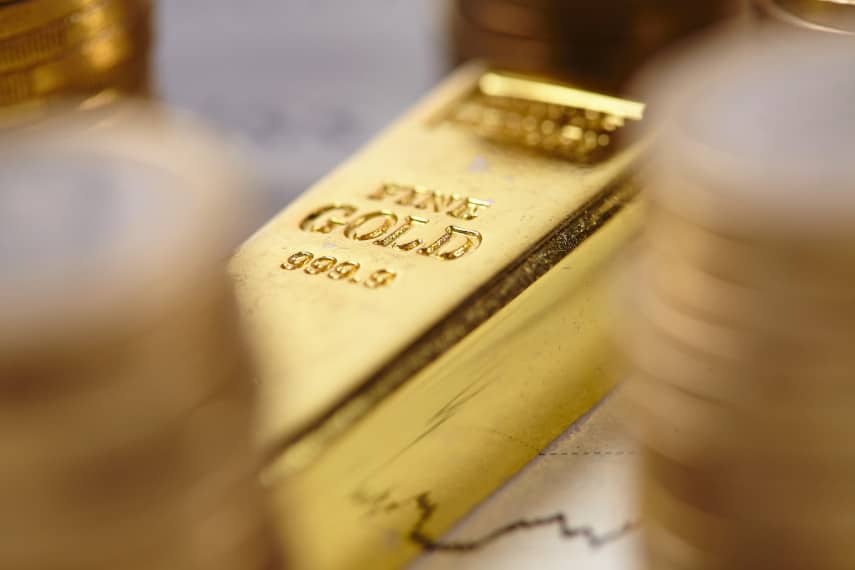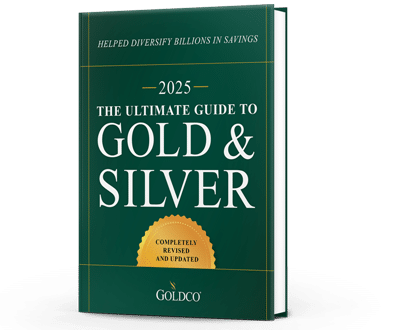This Is How a Gold IRA Works
With everything that’s going on in the world today, more and more people seem to be getting nervous about their future’s well-being Stock markets are starting to worry about the threats of a...
Precious Metals

With gold having recently broken through the $2,000 barrier on its way to setting record high prices, it has garnered a fair amount of attention, especially from investors who otherwise might not have looked at investing in the precious metals. Many of the investors looking at gold for the first time remember its performance from 2008 to 2011, as it tripled in price at a time when stock markets were struggling. Now that we’re seeing many of the same things happen this year that we did in 2008, many investors are starting to wonder whether gold is right for them.
Whether you’re looking to protect your retirement savings with a gold IRA, trying to pick up a few coins just in case, or merely exploring your options, there are a few things you need to keep in mind before investing in gold. Here are five things that investors looking at gold need to know right now.
Gold has long had a reputation for performing well during times of economic turmoil. 2008 was a prime example of that, and was the last major bull run that gold experienced. With the US economy having lost so many jobs and having experienced such a major drop in productivity this year, it’s only natural that investors fearing a long recession or depression would look to invest in gold. That uncertainty about the future, and the increased demand for gold that has resulted, will likely mean sustained high gold prices as long as the economy remains weak.
Added to that are supply problems that will limit the availability of precious metals coins to investors. The US Mint will likely have to choose between minting either silver or gold coins for investors, but not both at the same time, due to concerns about COVID in the workplace. That decreased supply could last for over a year, which would likely further drive up gold prices as investors have to look for alternatives.
Even the most bullish analysts didn’t expect gold to hit $2,000 this year, let alone little over halfway through the year. But the bull run isn’t over yet, and could last for quite a while longer.
One thing that many new gold investors may do is get nervous about every little drop in the gold price. As an international commodity that is traded 24/7, the gold price is always moving. And because gold is in demand throughout the world, its price can move due to events halfway around the world that might not make any sense to Americans.
Particularly with such a great recent run in the gold price, there will be some profit-taking. We saw that at the end of last week, as the gold price pulled back slightly. If the economy gets really bad, we may even see large gold holders liquidating their positions, putting downward pressure on the gold price.
Remember that in 2008, gold actually lost value as fears about the financial system’s collapse caused many people to panic. Many investors who had to cover losses elsewhere ended up liquidating their holdings, causing gold to lose value in the fall of 2008. But soon thereafter gold and stocks began to diverge, and gold started making amazing gains while stocks continued to plummet.
That’s why it’s important to remember that gold is a long-term investment. It’s not a get-rich-quick scheme, it’s not something you day trade, and it’s not something you rotate in and out of on a monthly or annual basis. It’s an investment that you hold for years, both to take advantage of long-term asset growth and to provide long-term hedging and protection against financial downturns.
Investors who keep that in mind, and who realize that they are going to be holding their gold for at least 3, 5, or 10 or more years begin to understand the role gold plays in their investment portfolios and begin to take short-term price falls in stride.
Everyone likes to say that stock markets are a better long-term source of wealth, but that isn’t always true. A lot of it depends on when you get into stock markets, which stocks you pick, etc. Even indexing isn’t a foolproof way of making solid gains, nor will it mean that you outperform gold.
For instance, since President Nixon closed the gold window in 1971, the S&P 500 has average annualized gains of about 7.5%, while the Dow Jones has average annualized gains of about 7.2%. Gold, meanwhile, has average annualized gains of about 8.2%.
In this century, the S&P 500 has average annualized gains of 4.8%, while the Dow Jones has average annualized gains of 5.0%. Gold has gained at nearly double the rate of stock markets, with 10.9% average annualized gains. How many investors wish they could go back 20 years and invest in gold?
Gold has served as a source of wealth and financial stability for centuries. That’s why investors even to this day trust gold to protect their assets.
Remember that Americans were once banned from owning gold, so desperate was the government to force people to use devalued paper dollars. Yet despite that, investors sought every way they could to continue holding gold.
Some tried to hold onto their gold and not turn it in. Others tried to hold gold in foreign accounts. And still others fought tooth and nail to overturn the restrictions. They were ultimately successful, allowing millions of Americans once again to enjoy the benefits of investing in gold.
There’s never been a better time to invest in gold. Investors who have bought gold over the past few years are seeing their trust in gold rewarded with gains they couldn’t have even imagined. And over the next few years, gold is set to continue climbing.
With the economy weakening, the government spending ever more money to try to fix things, and the Federal Reserve continuing to aid and abet that through endless money creation, the case for investing in gold has never been greater. If you’re interested in learning more about investing in gold, contact the experts at Goldco to find out how you can make gold a part of your investment portfolio.

